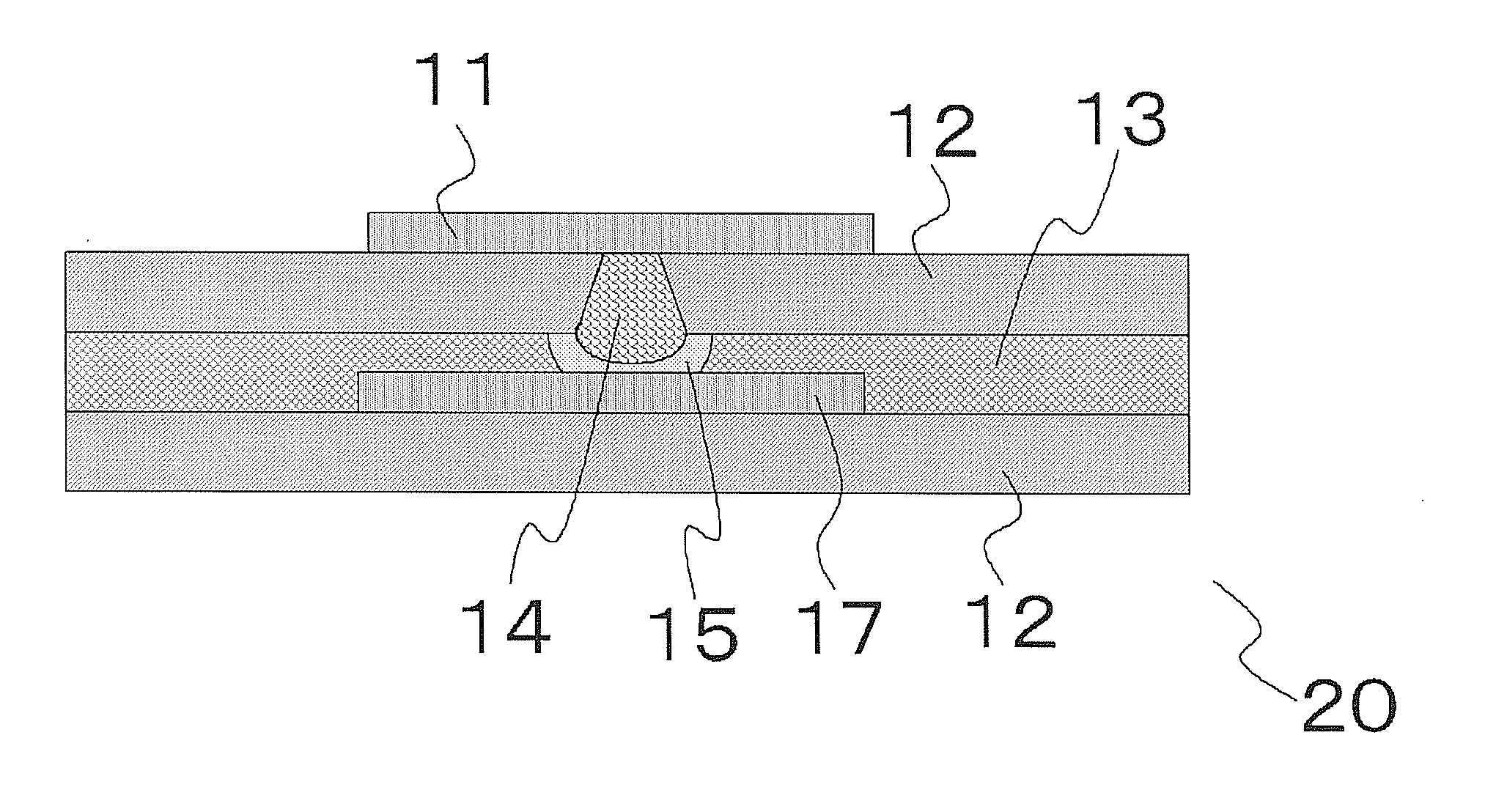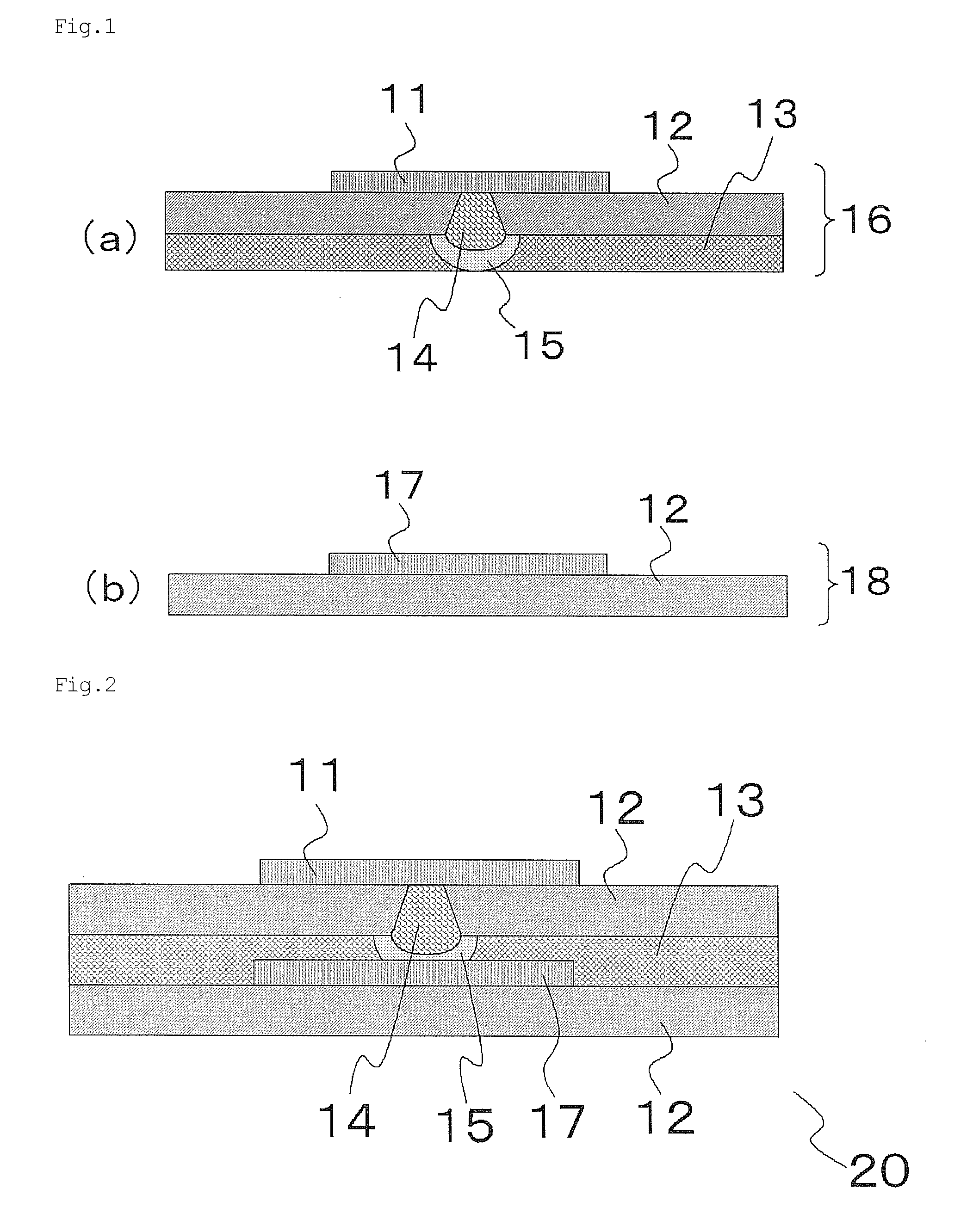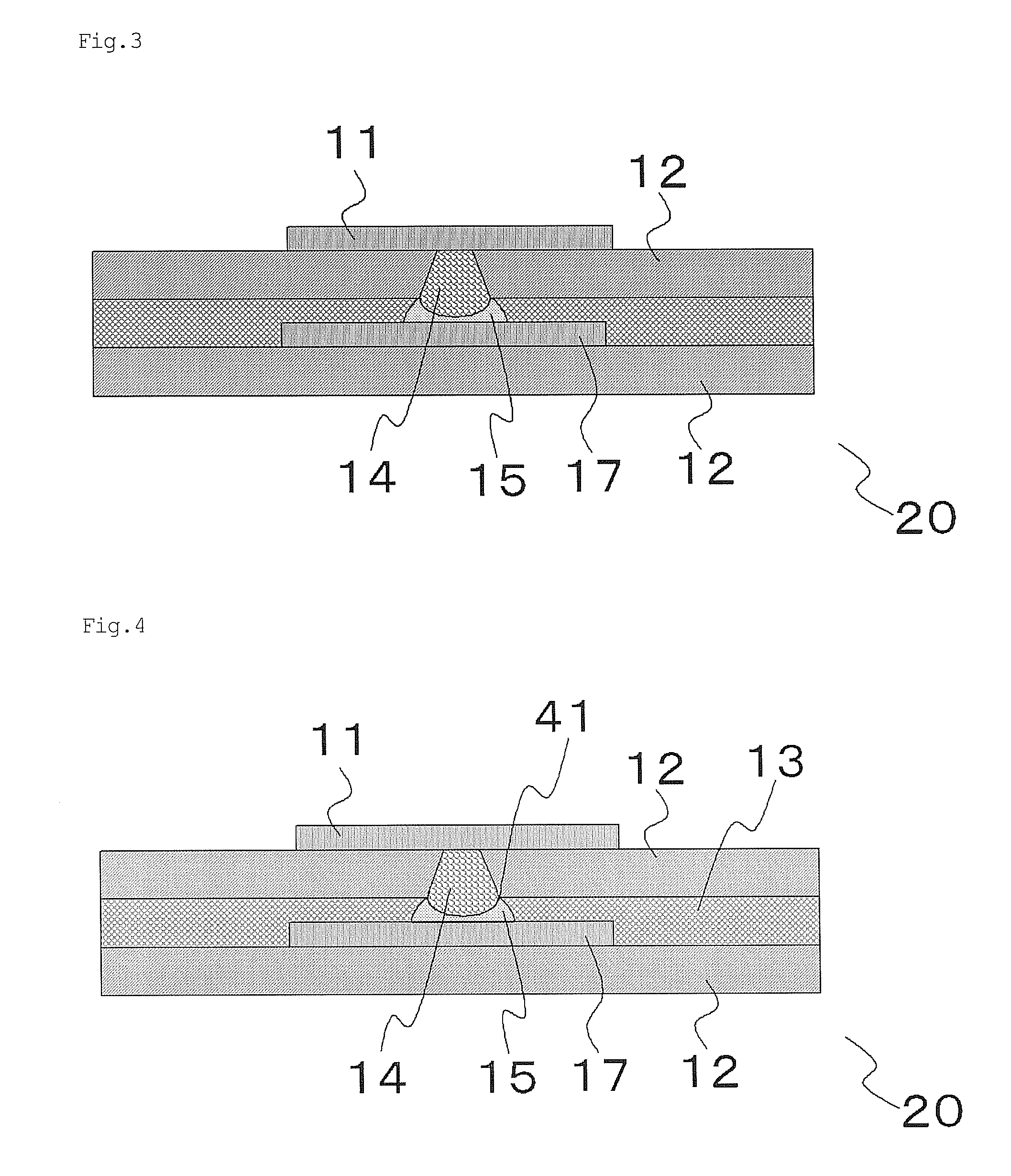Process for manufacturing circuit board and circuit board
- Summary
- Abstract
- Description
- Claims
- Application Information
AI Technical Summary
Benefits of technology
Problems solved by technology
Method used
Image
Examples
example 1
Preparation of an Interlayer Adhesive
[0123]Forty parts by weight of a bisphenol-A type epoxy resin (Dainippon Ink And Chemicals, Incorporated, EPICLON 840-S), 20 parts by weight of a novolac type phenol resin (Sumitomo Bakelite Co., Ltd., PR-53647), 20 parts by weight of a phenoxy resin (Japan Epoxy Resins Co., Ltd., YL-6954, number average molecular weight: 14500), 20 parts by weight of phenolphthaline (Kanto Chemical Co., Inc., Reagent grade) and 100 parts by weight of acetone were weighed, and mixed and stirred to give an interlayer adhesive. This interlayer adhesive was measured for a copper-oxide reduction rate, a solder wet spread rate and a melt viscosity as described above and the following results were obtained.
[0124]Copper-oxide reduction rate: 85%
[0125]Solder wet spread rate:
[0126]Solder ball[0127]SnPt: 55%[0128]SnAgCu: 52%[0129]SnBi: 54%
[0130]Melt viscosity: 1000 Pa·s
Preparation of a Circuit Board
[0131]A circuit board was prepared in accordance with the steps illustrated...
example 2
[0133]A circuit board was prepared as described in Example 1, except thermocompression was conducted at 220° C. and 2 MPa and pressing was conducted at 221° C. and 1 MPa for 25 sec.
PUM
| Property | Measurement | Unit |
|---|---|---|
| Temperature | aaaaa | aaaaa |
| Temperature | aaaaa | aaaaa |
| Temperature | aaaaa | aaaaa |
Abstract
Description
Claims
Application Information
 Login to View More
Login to View More - R&D
- Intellectual Property
- Life Sciences
- Materials
- Tech Scout
- Unparalleled Data Quality
- Higher Quality Content
- 60% Fewer Hallucinations
Browse by: Latest US Patents, China's latest patents, Technical Efficacy Thesaurus, Application Domain, Technology Topic, Popular Technical Reports.
© 2025 PatSnap. All rights reserved.Legal|Privacy policy|Modern Slavery Act Transparency Statement|Sitemap|About US| Contact US: help@patsnap.com



